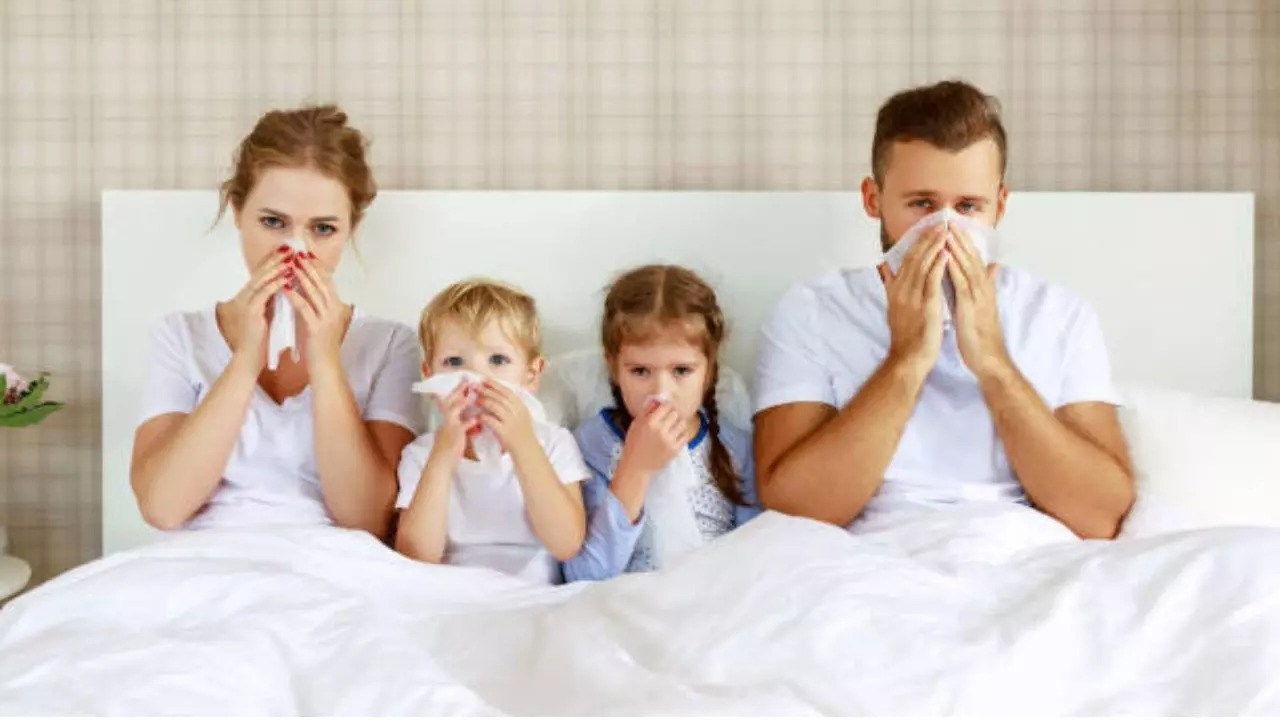Contents
-
news
-
Health
Attention These are the 5 most common types of cold that you should be careful of; The second may be life threatening
There are more than 200 types of colds but six main types account for the majority of cases worldwide. According to doctors, apart from corona virus, enterovirus, parainfluenza and adenovirus, rhinovirus is the most common virus. These all cause similar symptoms – including a runny nose, congestion, cough or sore throat. Read on to know more about them.

Although a cold only lasts about a week, it can last longer in young children, older adults or people with weakened immune levels.
As the weather is changing, most of the people around you may be suffering from cough and cold – an upper respiratory infection that affects your nose, throat and lungs. According to doctors, common symptoms include runny or blocked nose, sore throat, sneezing, cough, mild headache and mild fever. Even though it only lasts a week or a maximum of ten days, it can last longer in young children, older adults or people with weak immune levels.
Experts say there are more than 200 viruses that cause colds, although the most common include:
rhinovirus
Studies show that rhinoviruses cause 50 percent of cold cases worldwide. While they spread throughout the year – rhinoviruses are most active in the early fall and spring and spread in crowded places such as schools and offices.
Symptoms of rhinovirus are usually mild and go away within a week or maximum 10 days. This virus can cause problems like ear infections, sinus infections or breathing problems – especially for people with asthma or allergies.
corona virus
It’s another common cold – which led to the rise of the COVID-19 pandemic. Statistics say coronavirus causes about 15 percent of cases of seasonal cold and usually peaks in the winter season.
Like other cold viruses, coronavirus is mild and only lasts about a week — even though it causes more serious issues, including life-threatening problems like pneumonia in people with weakened immunity. Doctors recommend getting tested if you have been exposed to the COVID-19 virus or have symptoms, because when they become severe, you may need to be hospitalized.
enterovirus
Enteroviruses are a group of more than 300 viruses—including rhinoviruses, coxsackieviruses, echoviruses, and polioviruses—that cause a wide range of serious diseases.
While rhinovirus is the most common cold-causing virus, other enteroviruses such as enterovirus D68 (EV-D68) and coxsackievirus also cause respiratory problems. Some non-respiratory enterovirus diseases that cause cold-like symptoms include aseptic meningitis and hand, foot, and mouth disease.
Human parainfluenza (HPIV)
Human parainfluenza virus or HPIV, which causes sore throat, fever, blocked nose and chest pain – causes both upper respiratory infections and lower respiratory tract infections that seriously affect your airways and lungs – Especially in children under 5 years of age.
Doctors say there are four types of parainfluenza — types 1 and 2 — most common in the fall, while type 3 occurs annually and peaks in the spring and early summer. Types 1 and 3 cause more serious illnesses such as croup, bronchiolitis or pneumonia.
adenovirus
Adenoviruses cause cold symptoms that last longer than those caused by rhinoviruses – sometimes lasting for weeks or months. This virus is more common in early spring and winter, although it can occur year-round.
The cold caused by adenovirus spreads easily in daycares, hospitals, and schools.
How to know what type of virus you have?
According to experts, even though it can be difficult to know what type of virus is causing your cold — patterns provide clues. While a barking cough may indicate croup from parainfluenza, the pink eye cold is most often caused by adenovirus—which can last longer than other colds.
A doctor will do tests to find out the type of virus, but these tests are usually not necessary unless severe illness or complications develop.
Ways to prevent cold
Even though you can’t prevent colds completely, there are ways and solutions to reduce the symptoms:
- Avoid close contact with others when sick
- Avoid touching your eyes, face, nose or mouth with dirty hands
- Clean and disinfect surfaces you touch frequently
- taking supplements such as vitamin C, vitamin D, or zinc
- cover coughs and sneezes with a tissue
- Avoid crowded places during peak outbreak
- Keep distance from people with cold and cough
- stay home when sick
- wash your hands frequently with soap and water
Get the latest news live on Times Now with breaking news and top headlines from around the world.


